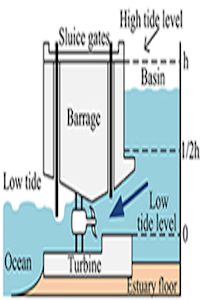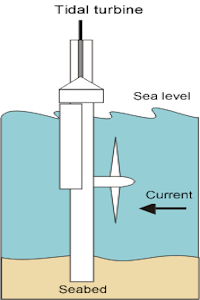
Tidal Power (Harnessing The Ocean)
It is almost self explanatory. Tides roll in and out according to the pull of the moon and the gravity of the earth, this cycle creates a form of kinetic energy. This energy can be tapped and even though advances have been made it is still very new and exploratory. Tidal power is a form of green energy but as of yet no one knows what affect it will have on the environment.
Tidal power emits zero greenhouse gases and in comparison to solar and wind takes up much less space. The largest tidal power facility is currently in South Korea known as the Sihwa Lake Tidal Power Station. It has a installed capacity of 254MW. The project, established in 2011, was easily added to a 12.5km-long seawall built in 1994 to protect the coast against flooding and to support agricultural irrigation. If you compare the output versus the space taken up it is a much better use of space.
Tidal power is predictable. The sun, moon and earth all work in cycles which is an advantage because engineers can design much more efficient systems based on these cycles. It is much easier to predict these cycles then to predict when the wind is going to blow or the sun shine.
Tidal power equipment has a longer lifespan then most wind or solar projects, this rate is about double compared to other alternative energies.
The down side is as with most things; the unknowns. We don't know what the impact on marine life will be as of yet. Wherever we place this units will definitely have an impact. How detrimental an impact is yet to be determined. Electro-magnetic emissions might also disrupt the sensitive marine life. Another disadvantage is the high cost of equipment and installation, as the industry progresses it will come down and become more cost effective.


The tides will always be with us and so can tidal power. Continuing the research and making advances in the construction and implementation will make this technology a viable clean energy source and has the potential to provide up to 4.5% of our energy needs.


